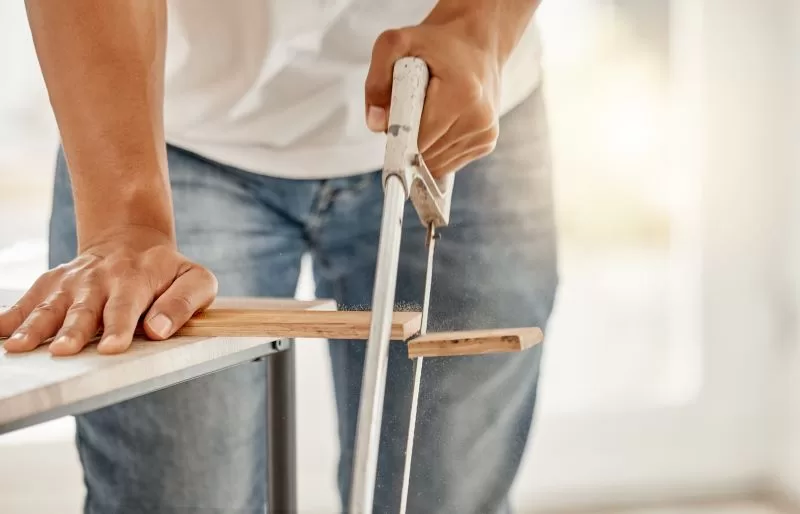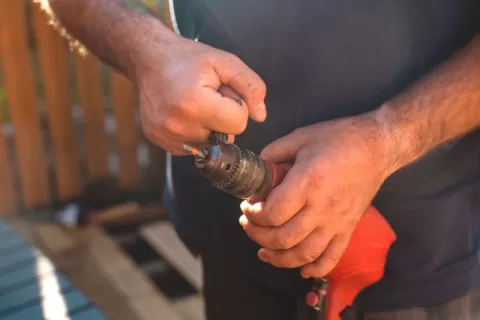Home renovation projects have seen a surge in popularity, with more people taking on DIY tasks to transform their living spaces. This trend isn’t just about saving money; it’s also about the satisfaction and personalization that come with doing it yourself. Whether you’re a seasoned DIYer or just starting, having the right tools is crucial for success. This article aims to guide you through the essential tools needed for home renovation, ensuring your projects are efficient, safe, and rewarding.
Basic Tools Every DIYer Needs
Before you dive into any home renovation project, make sure you have these fundamental tools in your arsenal. They’re the backbone of any successful DIY endeavor.
A. Measuring and Marking Tools
Accurate measurements are the foundation of any well-executed project. These tools ensure your cuts, installations, and finishes are precise:
- Tape measure: A retractable tape measure is a must-have for measuring distances, whether it’s for wall dimensions, furniture placement, or cutting materials to size. Invest in a sturdy one with a locking mechanism to prevent accidental retraction.
- Rulers and levels: Rulers come in handy for smaller measurements and marking straight lines. A level is crucial for ensuring surfaces are plumb (perfectly vertical) or level (perfectly horizontal). This is especially important for installing cabinets, shelves, and tile.
Without accurate measurements, your project could end up with misaligned tiles, uneven shelves, or gaps in your installations. Take your time to measure twice and cut once.
B. Cutting Tools
The right cutting tools make all the difference when it comes to shaping and trimming materials to fit your project perfectly. You can check our recommended cutting tools that you can easily find in online stores, and shop now.
- Utility knives: A sharp utility knife is essential for scoring drywall, cutting through caulk, and making precise cuts on various materials. Remember to replace the blades regularly for optimal cutting performance.
- Saws: Different types of saws are designed for specific tasks. A handsaw is versatile for general cutting, while a circular saw is ideal for making long, straight cuts in wood. A jigsaw is perfect for curved cuts and intricate patterns. If you’re dealing with metal, a hacksaw is the way to go.
Choosing the right saw for the job ensures clean cuts and minimizes the risk of damaging your materials.
Power Tools for Advanced Projects
As you progress in your DIY journey, you’ll likely encounter projects that require a bit more muscle and precision. This is where power tools come in. They make tasks faster, easier, and allow you to tackle more ambitious renovations.
A. Drills and Drivers
A drill is a versatile tool that can bore holes, drive screws, and even mix paint when fitted with the right attachment.
- Cordless drills vs. corded drills: Cordless drills offer portability and freedom of movement, while corded drills provide consistent power without the need for recharging. Consider your typical projects and workspace when deciding which type is right for you.
- Drill bits and accessories: A variety of drill bits are available for different materials like wood, metal, and concrete. Invest in a good set that includes a range of sizes. Accessories like screwdriver bits, countersink bits, and hole saws expand the functionality of your drill.
Whether you’re hanging shelves, assembling furniture, or installing fixtures, a drill will be your go-to tool.
B. Saws and Sanders
When it comes to cutting and smoothing materials, saws and sanders are indispensable as home renovation tools:
- Circular saws: Ideal for making long, straight cuts in wood, a circular saw is essential for projects like building decks, framing walls, or cutting plywood. Always use caution and follow safety guidelines when operating a circular saw.
- Jigsaws: These saws excel at making curved cuts and intricate patterns. They are perfect for cutting out shapes for shelves, customizing trim pieces, or creating decorative elements.
- Sanders: Sanders are used to smooth rough surfaces, remove old finishes, or prepare wood for staining or painting. Different types of sanders are available, including orbital sanders, belt sanders, and detail sanders, each suited for specific tasks.
When choosing a saw or sander, consider the size and type of material you’ll be working with. Always wear safety glasses and ear protection when using power tools.
Fastening and Joining Tools
When it comes to securing materials and assembling components, having the right fastening and joining tools is crucial. These tools ensure stability, strength, and longevity in your projects.
A. Hammers and Mallets
Hammers are the workhorses of DIY projects. They come in various types, each designed for specific tasks:
- Claw hammer: The most common type, featuring a claw for pulling out nails and a flat head for driving them in. Ideal for general carpentry and demolition work.
- Rubber mallet: Used for striking delicate surfaces without causing damage. Perfect for assembling furniture or tapping wood joints into place.
- Sledgehammer: Reserved for heavy-duty tasks like breaking up concrete or driving large stakes.
When using a hammer, choose the right size and weight for the job. Grip it firmly but not too tightly, and aim for the center of the nailhead to avoid bending it.
B. Screwdrivers and Wrenches
Screws and bolts are essential for fastening many components in home renovations.
- Screwdrivers: A variety of screwdrivers are necessary for different types of screws. Flat-head and Phillips-head are the most common, but you might also encounter Torx, square, and hex screws. Invest in a good set that includes a range of sizes and types.
- Wrenches and socket sets: Wrenches are used to tighten or loosen nuts and bolts. A socket set provides additional leverage and versatility for working in tight spaces. Make sure to choose the wrench or socket that is the right size for the job to avoid stripping the fastener.
When using screwdrivers, apply firm pressure and turn the handle steadily to avoid slipping and damaging the screw head. When using wrenches, avoid overtightening, as this can damage the fastener or the material being secured.
In Conclusion
Having the right tools is the key to unlocking the full potential of your DIY home renovation projects. From measuring and marking to cutting, drilling, fastening, and finishing, the tools covered in this guide are just a starting point. As you gain experience and confidence, you can expand your collection and tackle even more ambitious projects.
Remember, successful DIY projects are about more than just having the right equipment. It’s also about planning, preparation, and taking the necessary safety precautions. Before you start any project, research the techniques involved, gather the necessary materials, and create a detailed plan. Don’t be afraid to ask for help or consult with experts when needed.


